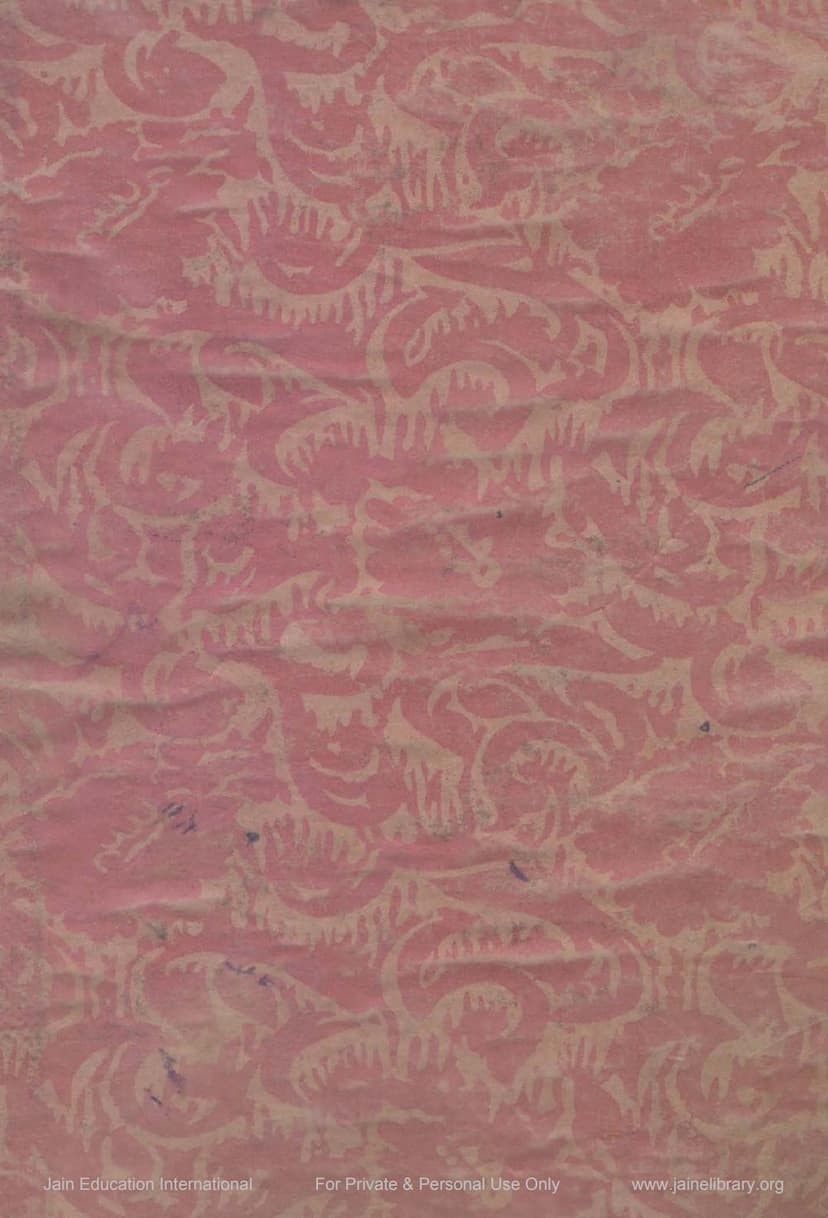Dharmadhyaksha
Added to library: September 1, 2025

Summary
Here is a comprehensive summary of the Jain text "Dharmadhyaksha" (The Archdeacon), which is a Gujarati translation and abridgment of Victor Hugo's "The Hunchback of Notre Dame," edited by Gopaldas Jivabhai Patel and published by Gyanjyoti Prakashan Mandir, Ahmedabad, in January 1975.
The book is presented as a Gujarati translation of Victor Hugo's novel, with editor Gopaldas Jivabhai Patel undertaking the task of abridging it from the French original's English translation. The publisher, Kamuben Amrutlal Patel, highlights the novel's powerful narrative and its ability to depict the depths of human potential and downfall. The publisher also praises Gopaldas Patel for his service in making five of Victor Hugo's major novels accessible to Gujarati readers.
The text includes a detailed preface by the editor, Gopaldas Jivabhai Patel, which delves into the themes and characters of the novel. He describes it as a story of an incomplete human life, where the author aims to celebrate completeness by portraying incompleteness itself. The preface meticulously analyzes the three love stories presented: two from men to women and one from a woman to a man. It emphasizes that the novel primarily depicts flawed love, but in doing so, reveals the truth of what true love should be.
Patel specifically highlights the character of the Archdeacon, Claude Frollo, whose unnatural love for a woman stems from his renunciation of worldly life for scholarly pursuits and his responsibility for his younger brother. This love, he notes, follows the path described in the Bhagavad Gita: from desire to anger, to delusion, to loss of memory, to destruction of intellect, and finally to ruin. However, he also points out that Frollo could have chosen a path of sacrifice for love, as depicted in another of Hugo's novels, "Toilers of the Sea." The editor emphasizes the human freedom to choose different paths, which is both the glory and the tragedy of human life. He praises the author's skill in vividly portraying these choices and making the reader experience the reality of pure love.
The summary of the novel's main characters and their roles:
- Quasimodo: Described as the embodiment of physical deformity, leading to a sense of inferiority. His attraction to Esmeralda, a beautiful woman, arises from a sense of gratitude, but he is aware of his limitations and does not overstep them. Unlike Frollo, he channels his love into protecting Esmeralda, rather than preying on her father. He manages to avoid the path of anger and delusion described in the Gita.
- Esmeralda: Known as a gypsy girl and dancer, she is portrayed as a humble beggar. Her love for Phoebus, a man, is born from a sense of gratitude and is innocent and intense. Despite her humble origins, her pure and passionate love is presented as having the potential to resonate with true love in Phoebus.
- Claude Frollo (The Archdeacon): He is characterized as a man driven by unnatural desires and a distorted form of love. His scholarly pursuits and renunciation of worldly life led to the manifestation of this love, which becomes extraordinarily intense. His love follows a destructive cycle, as described in the Bhagavad Gita.
The preface also discusses the novel's structure and the challenges of translation. Patel acknowledges that the abridgment required significant cuts from the original French text, but he believes the essence and message remain intact. He encourages readers to persevere through the initial stages of the story to appreciate its profound depth. The publisher notes the novel's timeless appeal and its potential to inspire the new generation with ideals similar to those of Mahatma Gandhi.
The book's structure is divided into three parts:
- Part 1: Covers the "Fool Festival" in Paris, introducing the setting and the chaotic atmosphere of medieval Paris.
- Part 2: Details the "Sanctuary of Notre Dame," the characters of Claude Frollo and Quasimodo, and their relationships.
- Part 3: Continues the narrative, including events in the Palace of Justice and the "Fool Festival," and the events at Place de Grève.
The text also includes a character list and an errata page to correct any printing errors. The summary emphasizes that the novel's core theme is the family institution, explored through different characters' relationships and their varied outcomes. It highlights the contrast between mere sensory control and the pursuit of higher spiritual love, suggesting that true fulfillment comes from devotion to the divine. The editor concludes by stating that encountering great authors like Hugo allows readers to experience profound emotions and truths that they might not otherwise grasp, thus contributing to their evolution.
In essence, "Dharmadhyaksha" is presented not just as a story but as a philosophical and moral exploration of human nature, love, sin, and redemption, all set against the backdrop of medieval Paris and the magnificent Notre Dame cathedral.